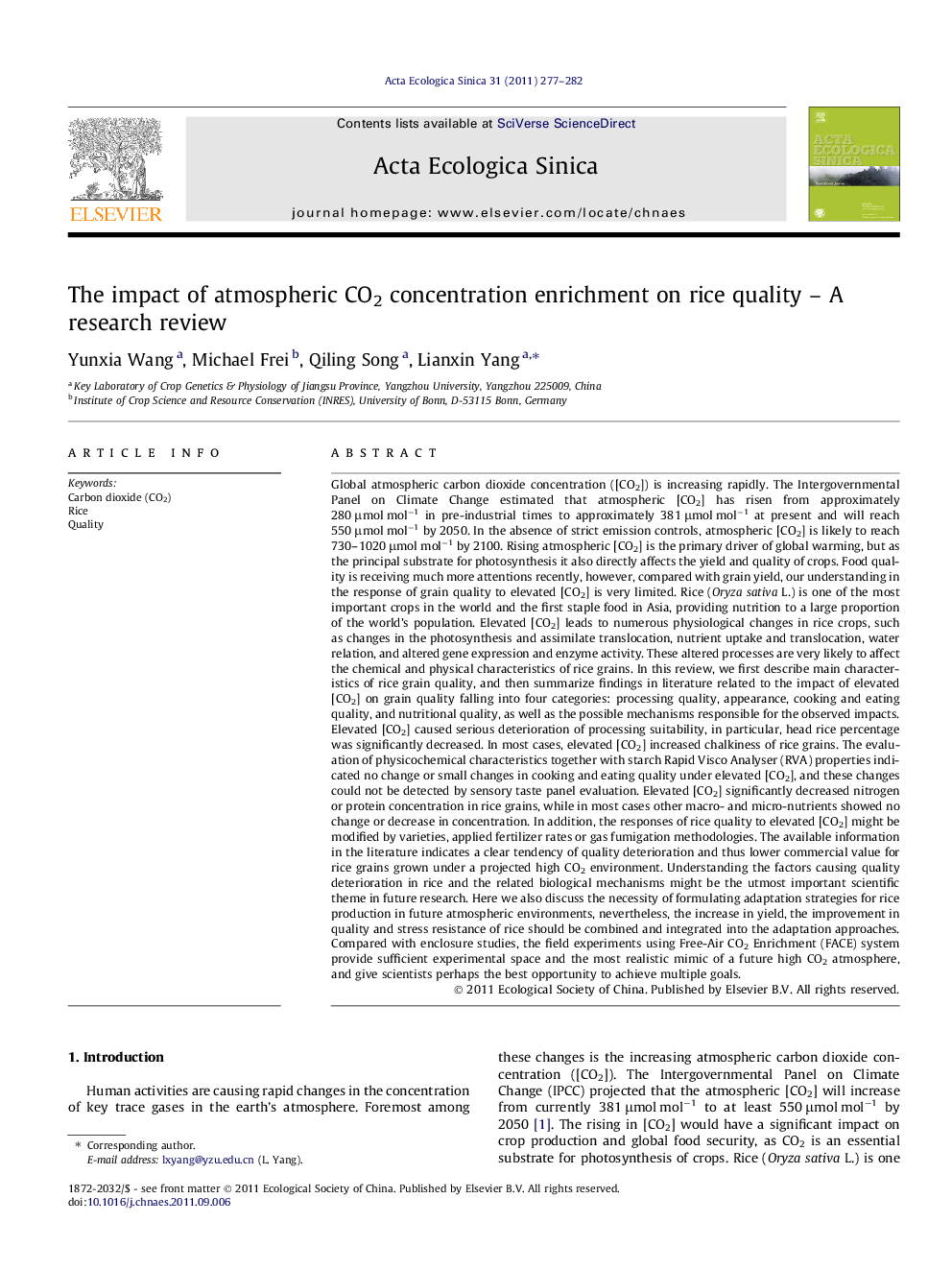| کد مقاله | کد نشریه | سال انتشار | مقاله انگلیسی | نسخه تمام متن |
|---|---|---|---|---|
| 4379900 | 1303949 | 2011 | 6 صفحه PDF | دانلود رایگان |

Global atmospheric carbon dioxide concentration ([CO2]) is increasing rapidly. The Intergovernmental Panel on Climate Change estimated that atmospheric [CO2] has risen from approximately 280 μmol mol−1 in pre-industrial times to approximately 381 μmol mol−1 at present and will reach 550 μmol mol−1 by 2050. In the absence of strict emission controls, atmospheric [CO2] is likely to reach 730–1020 μmol mol−1 by 2100. Rising atmospheric [CO2] is the primary driver of global warming, but as the principal substrate for photosynthesis it also directly affects the yield and quality of crops. Food quality is receiving much more attentions recently, however, compared with grain yield, our understanding in the response of grain quality to elevated [CO2] is very limited. Rice (Oryza sativa L.) is one of the most important crops in the world and the first staple food in Asia, providing nutrition to a large proportion of the world’s population. Elevated [CO2] leads to numerous physiological changes in rice crops, such as changes in the photosynthesis and assimilate translocation, nutrient uptake and translocation, water relation, and altered gene expression and enzyme activity. These altered processes are very likely to affect the chemical and physical characteristics of rice grains. In this review, we first describe main characteristics of rice grain quality, and then summarize findings in literature related to the impact of elevated [CO2] on grain quality falling into four categories: processing quality, appearance, cooking and eating quality, and nutritional quality, as well as the possible mechanisms responsible for the observed impacts. Elevated [CO2] caused serious deterioration of processing suitability, in particular, head rice percentage was significantly decreased. In most cases, elevated [CO2] increased chalkiness of rice grains. The evaluation of physicochemical characteristics together with starch Rapid Visco Analyser (RVA) properties indicated no change or small changes in cooking and eating quality under elevated [CO2], and these changes could not be detected by sensory taste panel evaluation. Elevated [CO2] significantly decreased nitrogen or protein concentration in rice grains, while in most cases other macro- and micro-nutrients showed no change or decrease in concentration. In addition, the responses of rice quality to elevated [CO2] might be modified by varieties, applied fertilizer rates or gas fumigation methodologies. The available information in the literature indicates a clear tendency of quality deterioration and thus lower commercial value for rice grains grown under a projected high CO2 environment. Understanding the factors causing quality deterioration in rice and the related biological mechanisms might be the utmost important scientific theme in future research. Here we also discuss the necessity of formulating adaptation strategies for rice production in future atmospheric environments, nevertheless, the increase in yield, the improvement in quality and stress resistance of rice should be combined and integrated into the adaptation approaches. Compared with enclosure studies, the field experiments using Free-Air CO2 Enrichment (FACE) system provide sufficient experimental space and the most realistic mimic of a future high CO2 atmosphere, and give scientists perhaps the best opportunity to achieve multiple goals.
Journal: Acta Ecologica Sinica - Volume 31, Issue 6, December 2011, Pages 277–282